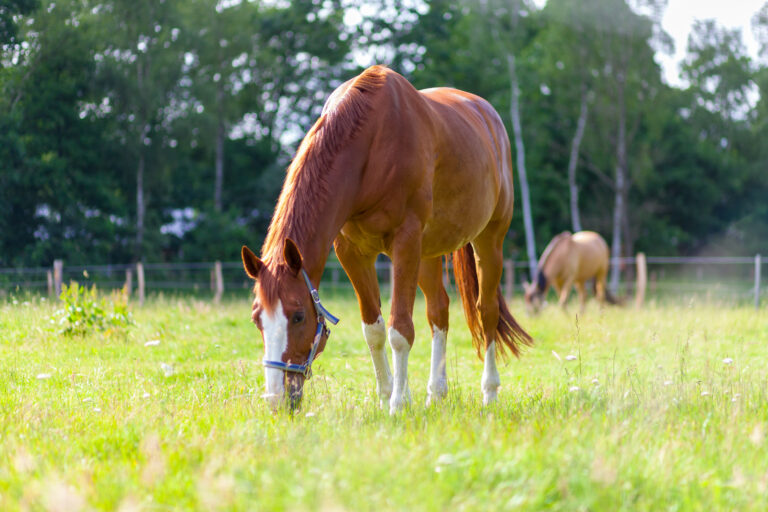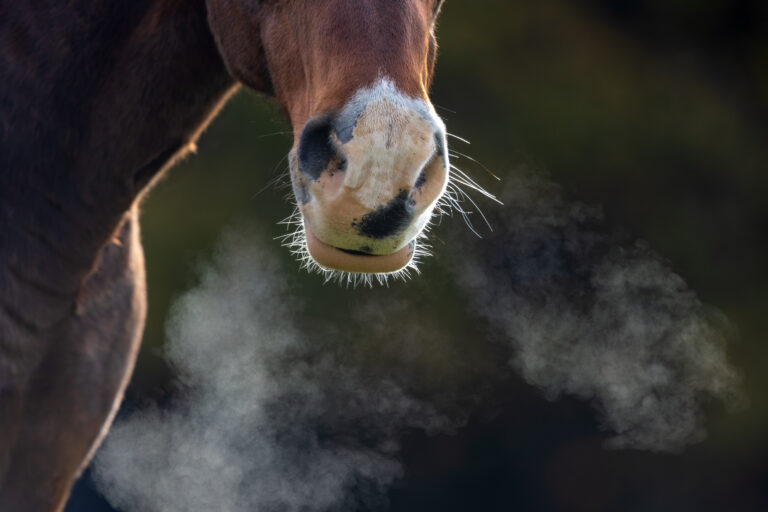
Insect bite hypersensitivity (IBH), also referred to as “summer eczema” or “sweet itch,” is associated with bites from Culicoides midges. The bites create intense pruritus, with affected horses developing excoriating lesions from constant itching and biting of the pruritic areas. To better characterize IBH’s effects on equine welfare, researchers in Sweden studied the effects of insect bite hypersensitivity on horses’ movement activity and behavior.
Study on Insect Bite Hypersensitivity
The study included 30 horses—16 with IBH and 14 controls—in a prospective crossover and case-control study over two summers. Both IBH-affected and control horses were stabled in the same paddock, so they had similar environmental experiences and Culicoides exposure.
Inflammation and pruritus result as an allergic response (Type I hypersensitivity) to antigens in the saliva of biting midges. These midges preferentially feed along the mane, the base of the tail, in the ear pinnae, and along the intermandibular area and ventral midline. Affected horses will go at lengths to relieve the itching, even to the point of significant self-trauma that results in open and ulcerated wounds. They will rub on walls, trees, posts, gates, and anything available in the stall or paddock. Behavioral changes, such as restlessness, depression, anxiety, nervousness, and potential weight loss, often develop from the stress of the discomfort.
Culicoides midges are most active in the evening and the morning, and these were the periods of observation in the study. Itching was more prevalent in IBH-affected horses during the evening hours compared to the morning, which correlates to greatest Culicoides activity after sunset.
Movement activity did not differ between IBH-affected horses and controls; however, IBH-affected horses created excoriations and areas of alopecia from persistent scratching. Even short periods of scratching elicited moderate to severe inflammatory skin lesions. Scratching behavior further releases pro-inflammatory mediators to create a vicious cycle of inflammation and discomfort with more scratching and itching. Horses in the study that were not affected by IBH also scratched but did not create self-inflicted skin lesions or wounds.
Management Strategies for IBH-Affected Horses
Prophylactic management strategies, such as use of a horse blanket or insect repellent, did not mitigate clinical signs of IBH due to continued exposure to Culicoides. While the researchers noted no differences in movement activity or behavior between IBH-affected and control horses, it is important to find prophylactic measures to improve horse welfare related to insect hypersensitivity. Even short periods of exposure to the midges leads to self-trauma that creates open wounds and lesions. In addition to the welfare issue, affected horses lose financial value, particularly if IBH triggers an autoimmune disorder. Owners are often sufficiently discouraged by the seriousness of the problem that they decide to sell the horse or even elect euthanasia.
It is ideal to prevent exposure to biting midges in the first place by moving horses to areas less conducive to midge development and breeding habitats, to arm horses with effective fly sheets that cover the belly, and to identify an appropriate insecticidal repellent that keeps the insects away from a horse’s body. Mosquito traps also prove useful for reducing Culicoides midge populations in the environment.
Reference
Soderroos D, Ignell R, Andersen PH, et al. The Effect of Insect Bite Hypersensitivity on Movement Activity and behavior of the Horse. Animals Aug 2023; doi.org/10.3390/ani13081283
Related Reading
- Causes of Immune-Mediated Myopathies in Horses
- Flumetasone’s Effects on Inflammation in Horses
- Equine Insect Bite Hypersensitivity
Stay in the know! Sign up for EquiManagement’s FREE weekly newsletters to get the latest equine research, disease alerts, and vet practice updates delivered straight to your inbox.









